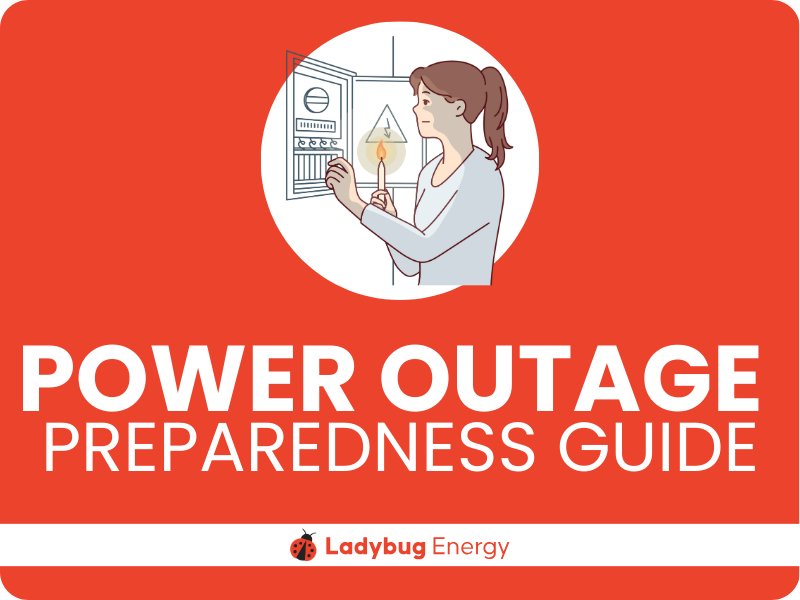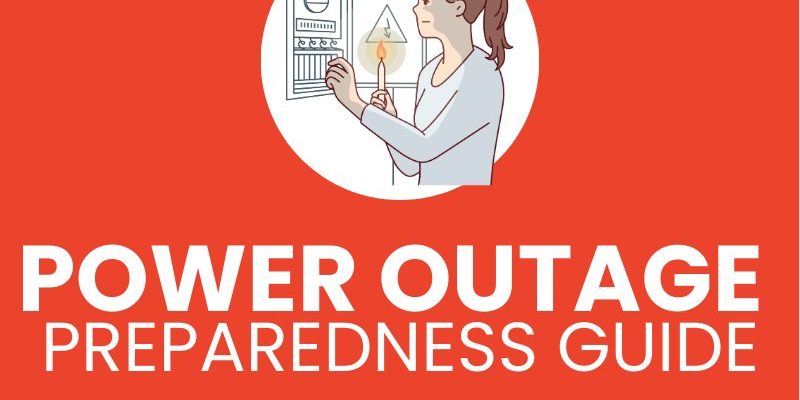
Losing electricity isn’t just an inconvenience. It can turn your routine upside down, especially in a busy, urban neighborhood like 20001, packed with apartments, businesses, and government offices. The tricky part? Outages aren’t always predictable. Weather, equipment glitches, even a stray branch can flip the switch. But here’s the thing: knowing your risks, staying ready, and troubleshooting smartly all make a huge difference when the lights go out. Let’s walk through what it really means to face power outages in zip code 20001—and how to be prepared, every time.
Why Zip Code 20001 Faces Unique Power Outage Risks
You might be wondering—why does 20001 seem to get random blackouts, while some other DC neighborhoods barely blink? The answer lies in a mix of neighborhood quirks, aging infrastructure, and the classic East Coast weather mood swings. For starters, 20001 covers parts of downtown, Shaw, Truxton Circle, and other bustling spots, all packed with old row houses, new condos, and a ton of commercial buildings. That combo puts serious pressure on the local power grid, especially during hot summers or freezing snaps.
Old power lines are a big piece of the puzzle. Much of D.C.’s electrical system dates back decades, and while upgrades are slowly happening, outages from equipment failure, transformers blowing, or cables snapping still happen almost weekly in some areas. Add in D.C.’s famous summer storms—when high winds fling tree limbs onto power lines—or icy winter rain making wires brittle, and it’s a recipe for flickering lights.
Another factor is overlapping demand. In 20001, you’ll find clusters of offices, schools, government agencies, and residents all using electricity at peak times. When everyone cranks the AC during a heatwave, the whole system gets pushed to its limits. That’s why outages can spike right when you need power the most.
Common Causes of Outages in 20001
It’s tempting to blame “the grid” whenever the power goes, but there are several different triggers for blackouts in zip code 20001. Let me break it down with a few real-world examples:
- Weather: Thunderstorms are the usual suspects—those summer downpours with wild wind gusts knock branches into overhead wires. In winter, ice storms can weigh down lines until they snap or droop onto roads.
- Equipment failures: Sometimes, it’s not dramatic at all. A blown transformer behind a row of shops, a corroded circuit breaker in an alley, or a failed underground cable can take out whole blocks for hours on end.
- Construction accidents: 20001 is always growing. Backhoes and boring machines sometimes slice through hidden wires. It’s not intentional, but it happens more than you’d think, especially during big renovation projects or utility upgrades.
- Human error or wildlife: Occasionally, someone flipping the wrong switch triggers an outage. Or—believe it or not—squirrels, raccoons, and birds can short out substations by gnawing or nesting in the wrong spots.
Here’s something you might not know: Losing power from a local circuit is very different from a citywide blackout. If it’s just your building or street, it’s probably a minor equipment issue (like a breaker tripped or a fuse blown). But if you look outside and see total darkness? That means a bigger chunk of the grid is out.
What to Do First During a Power Outage in 20001
When the power cuts out, it’s easy to freeze and panic. But the first few minutes actually set the tone for your whole outage experience. Here’s the step-by-step I always follow (and recommend to friends in the area):
1. Check your lights and neighbors. Is it just your apartment, or do you see streetlights out too? Sometimes, it’s just a blown fuse or tripped breaker inside your unit.
2. Test appliances or outlets. Plug something small (like a lamp or phone charger) into a few different outlets. This can help you figure out if it’s a partial or total outage.
3. Look outside or message a neighbor. If other buildings are dark, it’s likely a grid outage. If only your place is affected, focus on your breaker panel first.
4. Report the outage. In 20001, you’ll probably need to call Pepco (the main electricity provider). Their automated system usually recognizes your address, and the more people call, the faster they move.
Honestly, the sooner you check and report, the better your odds of getting attention—especially during a big storm or citywide problem.
While you wait, keep fridge doors closed, turn off sensitive electronics (so they aren’t blitzed when power snaps back), and make sure everyone at home is safe.
Safety Tips for Handling Extended Blackouts
If the outage lasts more than an hour, you need to shift from short-term troubleshooting into preparedness mode. Here’s the thing: Power failures in 20001 can sometimes drag on for several hours—or even days after major storms or big utility projects.
- Keep flashlights and batteries handy: Candles are okay in a pinch, but LED flashlights (or even headlamps) are safer and last way longer. Check battery charges every few months, especially before summer or winter storm season.
- Use surge protectors: Plug important stuff—fridge, computer, smart TV—into surge protectors. That way, when power comes back suddenly, you won’t risk frying your devices.
- Stay informed: Use your phone’s battery wisely. Listen to local news, Pepco alerts, or neighborhood groups for updates. If your phone’s dying, try to borrow a power bank or use a car charger.
- Food and water safety: Perishable food in the fridge usually lasts 4–6 hours without power, if you keep the door closed. For longer outages, consider using a cooler with ice or eating shelf-stable foods.
- Stay cool—or warm: If it’s hot, move to shaded rooms and drink water. If it’s cold, layer up and close doors to keep warmth in one area.
Don’t forget to check on elderly neighbors or anyone who relies on powered medical equipment. In 20001, apartment buildings often have backup generators for elevators or hallway lights, but individual units might not.
Building a Power Outage Emergency Kit
You don’t have to go full doomsday prepper—but if you live in zip code 20001, a basic emergency kit is smart. Let me explain what I always keep handy, and why:
- Flashlights and extra batteries: At least one per person, stored where you can grab them in the dark.
- Portable phone chargers: Power banks are lifesavers. Keep them charged and ready—especially if you have kids or roommates.
- Bottled water and shelf-stable snacks: Granola bars and peanut butter stay edible forever, and water bottles help if city water systems are disrupted.
- First aid kit and basic meds: You don’t want to hunt for band-aids or Tylenol by phone light.
- Manual can opener: Trust me, you’ll only forget this once.
- Copies of important contacts: Have emergency numbers on paper, not just in your phone. Include Pepco’s outage reporting line.
Even if you rarely have big outages, having these ready means you won’t be scrambling—or stuck in the dark—when trouble hits. Honestly, it’s peace of mind.
How to Prevent and Prepare for Outages in 20001
You can’t stop all blackouts, but there’s plenty you can do to lower your risk—and bounce back quicker. Here’s the kicker: Some of the best tricks are super simple, almost like syncing a remote control for the first time.
- Trim tree branches: If you own property, keep trees well-trimmed and away from overhead lines. This is especially crucial before summer storm season.
- Communicate with your landlord or HOA: For renters or condo dwellers, report old wiring, flickering lights, or busted outlets. Building managers can schedule inspections or upgrades, lowering risk of in-building issues.
- Have a “reset plan” for your home electronics: Power cycles can confuse some appliances, thermostats, or smart home hubs. Write down your Wi-Fi password and key settings in case you need to reboot or re-sync.
- Join local alerts: Signing up for Pepco text/email outage alerts or DC’s emergency notification system means you’ll know ASAP if a planned outage or major repair is coming up.
- Backup power options: If you work from home or have critical needs, consider a small generator or battery pack designed for apartment or condo use.
It’s a lot like troubleshooting a finicky device. A little planning now means fewer headaches later.
Understanding Power Restoration: What Happens Behind the Scenes
Ever wonder what’s really happening when you report an outage—and then wait, sometimes for hours, with zero updates? It’s more complicated than it seems.
Here’s the thing: When a big outage hits 20001, Pepco’s system first tries to “pair” the reports, looking for patterns. (Kind of like a remote pairing with a TV!) Crews then use maps and smart meters to pinpoint the trouble spot—maybe a blown substation, maybe a single street. They prioritize fixing problems affecting the most people first. Hospitals, fire stations, and large apartment blocks often get power restored before individual houses or low-rise buildings.
Sometimes, after repairs, power gets restored in phases. That’s why you might see streetlights flicker on, but your building stays dark a while longer. Don’t be surprised if there’s a short “test reset”—quick flickers as they sync everything back up. If things don’t come back as expected, report the outage again. The more detailed info they get, the faster they can troubleshoot tricky problems.
If you’re ever confused or frustrated, remember: Most utility workers are hustling in tough conditions to get the lights back for everyone. A little patience goes a long way.
Comparing Backup Power Solutions for Residents in 20001
Even if you’re prepared, sometimes you need a little extra insurance for those longer or more frequent power outages. Let’s break down the main options for backup power in city apartments or townhouses—no generator fumes required.
- Battery packs and solar chargers: Perfect for phones, tablets, or small electronics. They’re portable, don’t need gas, and you can recharge some models with a sunny windowsill.
- Small, indoor-rated generators: Some newer generators are designed for use in well-ventilated spaces (on balconies or patios). They can power a fridge, Wi-Fi router, or a few lights—but always follow safety instructions.
- Uninterruptible power supplies (UPS): These are great for keeping your computer or modem running during short blackouts or for safely shutting down devices if you need to.
- Whole-home or standby generators: Not usually practical for most apartments in 20001, but townhouses or single-family homes could consider one. They kick in automatically and power your whole house, but they’re expensive and need permits.
Most people in zip code 20001 find a mix of battery packs and portable chargers is enough for their outage needs. If you’re considering something bigger, check building rules—many condos and rowhouse blocks have strict rules about what’s allowed.
Closing Thoughts: Power Outages in 20001 Don’t Have to Catch You Off Guard
Living in zip code 20001 means you’re never too far from the hum of city life—or the occasional flash of a blackout. Power outages are part of the urban landscape, but with a little forethought, they don’t have to throw your whole routine off track. Take time to set up a basic emergency kit, keep an eye on the weather and those old power lines, and stay connected with neighbors and your electricity provider.
When the lights go out, you’ll be the one calmly finding your flashlight—while everyone else is still stumbling to reboot their Wi-Fi. That’s the kind of small win we could all use in this busy corner of D.C.
